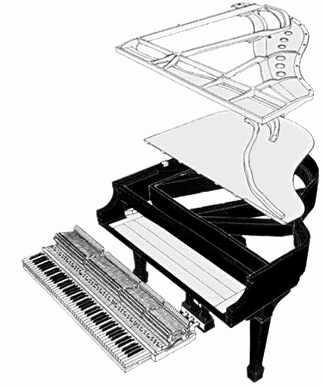 our skeleton and more specifically, our spine. The spine — our backbone — insures our strength and integrity. If our back isn’t in good health, our whole body suffers.
our skeleton and more specifically, our spine. The spine — our backbone — insures our strength and integrity. If our back isn’t in good health, our whole body suffers.
The same is true for pianos. The back frame of a piano provides the strength and integrity for the entire instrument. This frame supports the significant tension of the strings, about 20 tons of tension to be exact. An inferior backframe won’t support the string tension as well, significantly increasing the need piano tuning more regularly and eventually devaluing your piano in the long run.
All pianos are not created equal and as you shop for your piano, there are at least two characteristics you want to look for in the backframe. First, take a visual inspection of the backposts. Vertical pianos should have six full-size, full-length backposts. Some manufacturers claim to have six backposts but use half-posts on the ends. A half-size 
You also want to evaluate the type of wood used for the posts. Spruce is a common material for backposts because it is a strong wood for it’s weight and resists splitting and cracking.
When your back hurts, it can ruin your day and back injuries seriously impair your quality of life. Pianos need strong backs, too, and a piano’s back health start with the backframe and posts. As you evaluate your piano purchase, pay close attention to this integral piece of piano construction to get the best piano you can buy.






